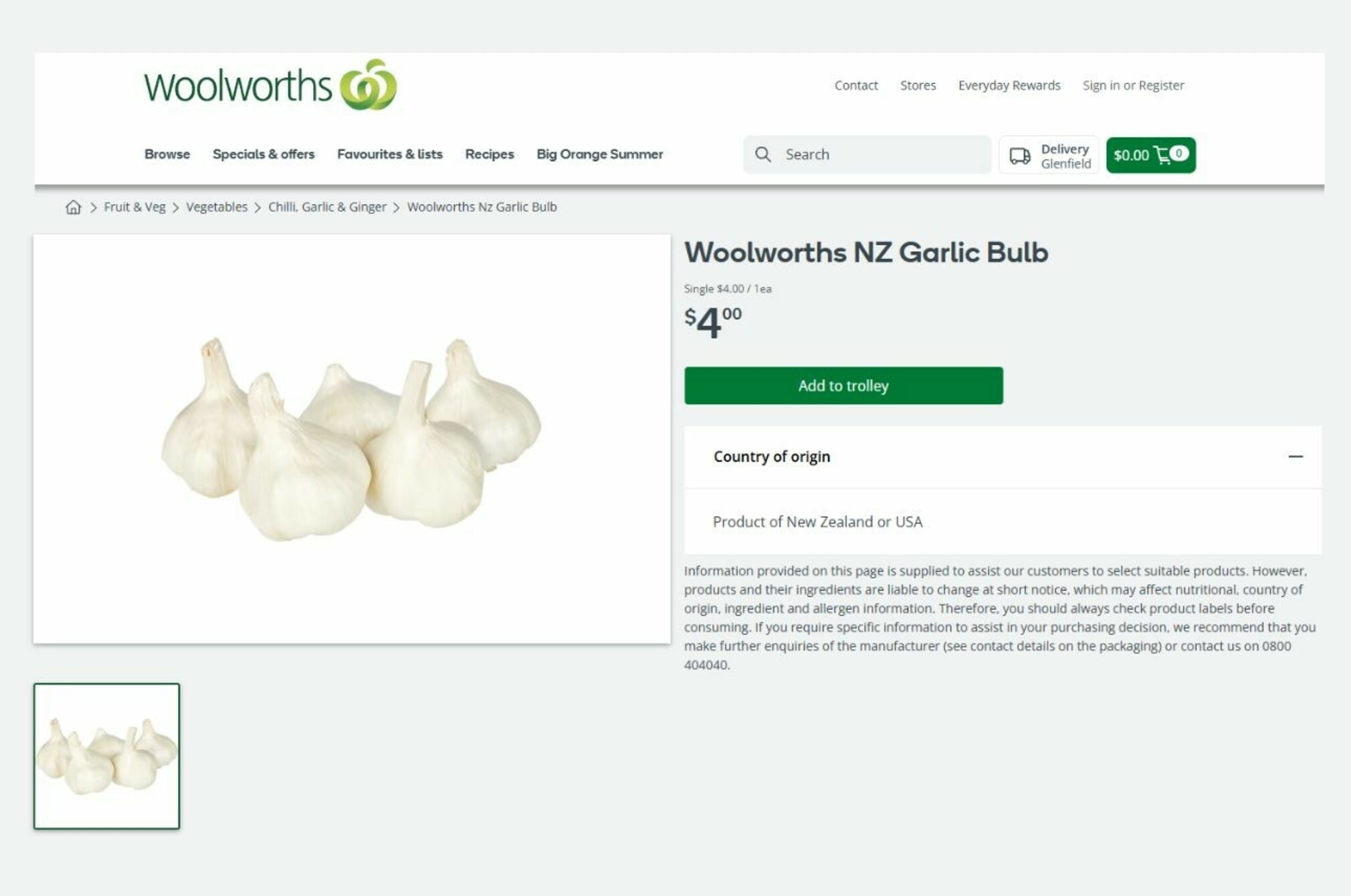Do you know where the garlic you’re buying comes from?
Recently we had a notification on our Instagram that we’d been tagged in a post – former MasterChef contestant Alice Taylor had made a video about her frustration buying garlic and wanted our thoughts.
In her video, which went on to receive about 112,000 views, Alice said, “I would love Consumer NZ’s opinion on this”.
The video detailed her experience buying garlic at Woolworths. “They sell two types of garlic. The first one is a product from China, and it’s $3.90, and it’s a 5-pack. The second one is for one bulb of garlic for $4, but it’s a product of New Zealand – but is it? Because, when you look closer, look what the label says.” Alice then showed the price sign with the $4 garlic bulb that reads “Product of New Zealand or USA”.
“To me, that’s outrageous. I think there are a lot of people who want to shop local even if it costs a little bit more, and if you can spend that little extra money, that’s great, but you’re asking us to spend $4 per bulb of garlic, and it might be from New Zealand or it might be from the US,” Alice said, shaking her head at the end of the video.
We took a look at Woolworths’ website, where the $4 bulbs are labelled as “Woolworths NZ Garlic Bulb Single” – the “NZ” would give the impression it was domestically grown garlic – but once you click into the product’s webpage, you can see that the country of origin information says “Product of New Zealand or USA”.

Single-ingredient fresh food, such as garlic, has been required to be sold with the country of origin labelled since 2022, but we don’t think Woolworths is breaking the rules with its garlic labelling. The regulations allow for multiple countries to be listed as the country of origin if the country changes often, and guidance on the regulations gives the example of it being OK for a packet of frozen broccoli to be labelled as “From China and/or Spain”.
When we asked Woolworths why it can’t just state the country of origin for garlic, a spokesperson gave this as the reason.
“While we prioritise selling domestically grown fruit and veg, we sometimes need to supplement with imported products to meet customer needs. When transitioning between domestic and imported garlic, we may need to display two countries of origin due to stores potentially having supply of both.”
We think supermarkets should make it easier for consumers to know whether they’re buying food that’s been grown here or been transported across the globe. Given supermarkets can change their price tickets each week, we don’t think it should be difficult for them to update their signage to state where the garlic they are selling has been sourced from. Or if they are selling New Zealand and American garlic at the same time, the two options could be separated out, as is the case with the garlic from China.
We asked Chris Morrison from Te Mata Garlic in Havelock North for his tips on buying garlic. Chris agreed it can be hard sometimes to tell where the garlic you’re looking at is from, and he has complained to the Commerce Commission about it before. He said he’s seen garlic from China and New Zealand sold as American garlic, and garlic from China purposely removed from the customary mesh sock to look like it’s not part of the Chinese supply. He believed most of the errors he’s come across were mistakes by staff but said it’s important to get it right when there’s such a difference in prices charged.
Chris said if people wanted to be sure they were buying New Zealand garlic, they could buy direct from the grower as many now sell through their websites. “New Zealand garlic lasts 8 months, so you could buy it once or twice a year and store it. Many of our rapidly increasing online customers do just that,” Chris said.

Small kitchen appliances
From making breakfast to brewing your favourite beverage, sometimes it's the small appliances that do the most important jobs in the kitchen.

Member comments
Get access to comment